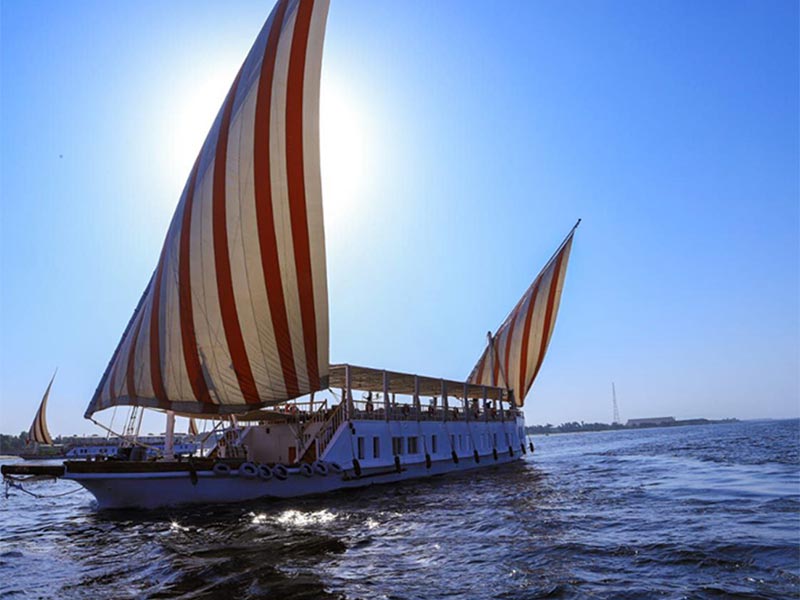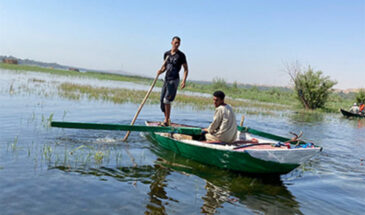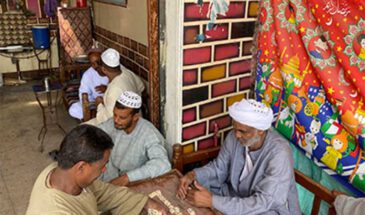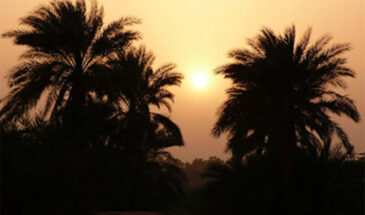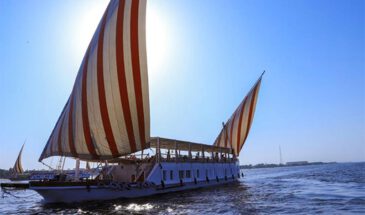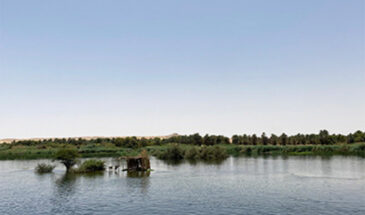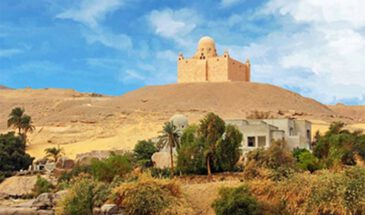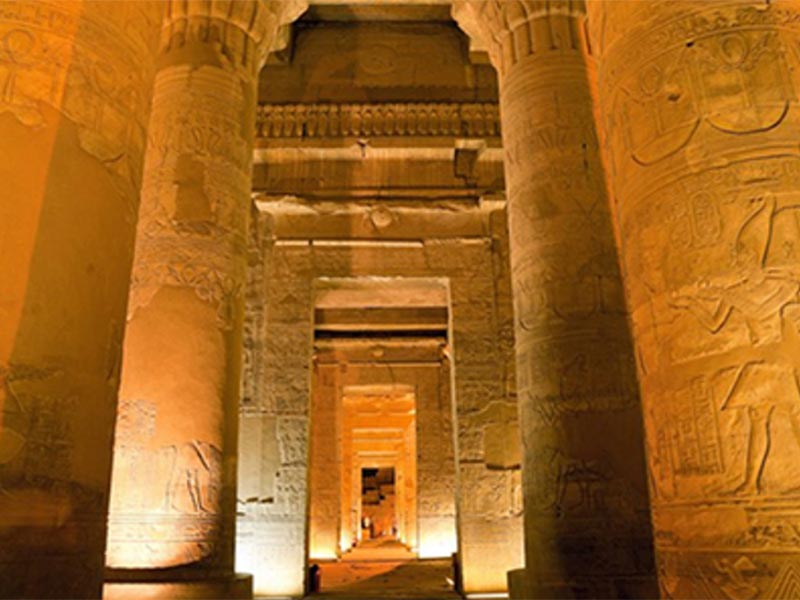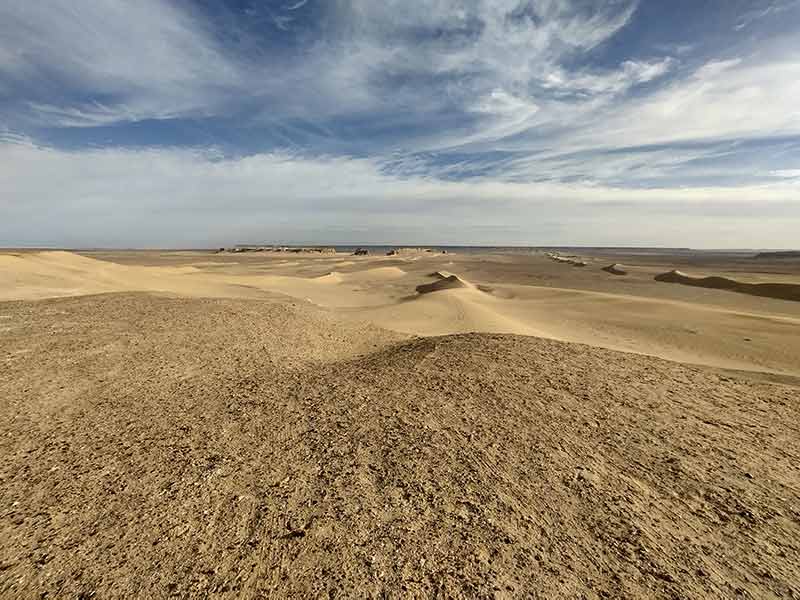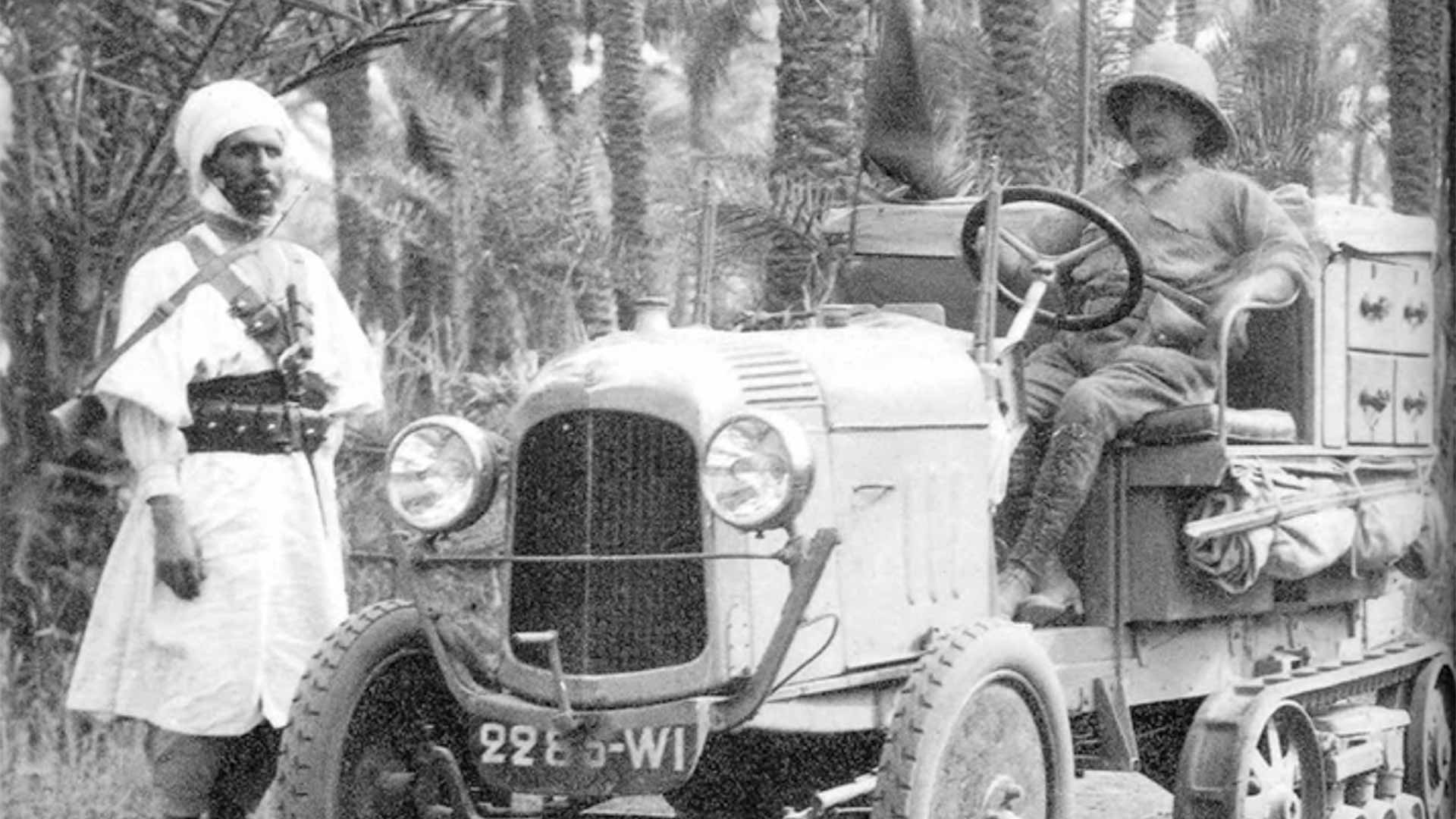- Overview
- Trip Outline
- Trip Includes
- Trip Excludes
- Gallery
- Booking
- FAQ
Your tour guide is waiting for you – to bring you to a cozy place in the suburbs of Cairo.
Overnight in Pearl Hotel or similar.
We finally leave the big city life behind us and set off into new worlds. Also known as the Great Rann of Kutch, the White Desert is a vast area of pristine white salt desert often explored for its natural beauty and ecological importance. It is also called the world's largest salt desert which stretches from the mouth of River Indus to the Gulf of Kutch.
There is a lot to see:
The Crystal Mountain is an obligatory stop for adventurous safari tours in the Oases of Egypt in the White desert. A small natural arch in the rock and the glittering calcite crystal walls make it a perfect place to pose for photos.
This is what geologists call an exhumed cave , a cave complete with stalagmites and stalactites that has been thrust upwards by earth movement and with time has lost its roof to erosion and has almost weathered away. Such as life - also the desert is black and white.
A little to the North of the White Desert, the Black Desert is closer to Bahariya than Farafra;
approximately 30 km to the South of Bawiti. The mountains have eroded to coat the desert with a layer of black powder and rocks giving it its name. Enjoy a night under the stars where legends come true.
Overnight Camping in White Desert N.P. (B/L/D)
Finally we arrive at the oasis of Dakhla, a special place as well. Dakhla Oasis is the southernmost oasis of Egypt and it was historically located in the center of an important caravans trading route that linked the Dakhla not only to the Kharga and Farafra Oases but only to the Nile Valley in the West and as far to the east as Libya. As opposed to the other oases in Egypt, more than half of the lands of Dakhla Oasis are agriculturally cultivated. This is because Dakhla Oasis is rich with a large
number of water springs like "Bir Talata" (well number three) and "Bir El Gabal" (the well of the mountain). These freshwater springs have become the most popular tourist attractions in Dakhla Oasis because of their wonderful warm water and relaxing atmosphere. Let's walk through the oasis and explore its special charme.
El-Qasr is a small village in El-Dakhla Oasis. The village itself is an interesting place to visit since no big change has been made to it since the ancient times. In different corners of the village, archeologists found a pottery factory, an old corn mill, as well as various Roman, Mameluke and Ottoman remains. The Mosque and Madrasa of El-Qasr Both the Mosque of El-Qasr (also known as Nasr el-Din Mosque) and the Madrasa (Quranic school) date back to the Ayyubid Period (c. 1000 AC).
Deir el-Hagar, the ‘Monastery of Stone’, is a sandstone temple on the western edge of Dakhla Oasis, about 10km from el-Qasr in the desert to the south of the cultivation. In ancient times it was known as the ‘Place of Coming Home’, or ‘Set-whe’.
After being buried in debris and sand for many centuries by the huge dune that can still be seen to the south, the temple has been uncovered, restored and partially reconstructed during the 1990s by the Dakhla Oasis Project with the Supreme Council of Antiquities and is now open to visitors.
Overnight in the Hotel Desert Lodge or similar. (B)
Close to Kharga we have a stop-over at El Bagawat and the Temple of Hibis.
El Bagawat, which is an ancient Christian cemetery, one of the oldest in the world, which functioned at the Kharga Oasis in southern-central Egypt from the 3rd to the 7th century AD. It is one of the earliest and best preserved Christian cemeteries from the ancient world.
The Temple of Hibis is the largest and best preserved ancient Egyptian temple in the Kharga Oasis, as well as the only structure in Egypt dating to the Saite-Persian period (664–404 BCE) which has come down to modern times in relatively good condition. Located about 2 km north of Kharga, it was devoted
to a syncretism of two local forms of the deity Amun: "Amun of Hibis" and "Amun-Ra of Karnak who dwells in Hibis".
It is alternatively believed to be dedicated to Amun and Osiris, its sanctuary contains depictions of hundreds of Egyptian deities
Overnight 4* Hotel Lotus Luxor or similar. (B)
The former capital Luxor is a true treasure of Egyptian antiquity and world famous since Howard Carter discovered Tutankhamun's tomb.
You start your day by checking out of the hotel and drive to the other side of the Nile to Thebes West, "into the realm of the dead". The banks of the Nile are cultivated with sugar cane fields, along the way you will see small villages and fellahin at work in the fields.
Enjoy the famous Valley of the Kings where you will visit three different tombs. In the extensive area you can use an electrically operated train as a means of transport.
Your local guide will explain the importance of the tombs in front of each tomb.
In order not to damage the valuable tomb paintings, there is no explanation in the underground facilities. A short drive takes you to the Valley Temple of Queen Hatshepsut.
The extensive temple complex is built into the rock and impresses every visitor with its monumental presence. The terraced complex offers magnificent views of the east side of the Nile and Luxor city.
On the way back to Luxor, make a stop at the silent guardians of the so-called "Memnon Colossi". After a lunch break, another highlight awaits: the grandiose temple complex of Karnak. The largest temple complex in Egypt extends about 3 km northeast of Luxor near the place of the same name and mainly includes the large Amun temple, the sanctuary of Chon and the festival temple of Tutmosis III. The complex appears extremely opulent and its architecture reflects the pharaohs' desire for immortality.
In the afternoon 50 minutes by bus along the Nile to the small town of Esna. Embarkation on the Nile Cruise. Welcome on board.
Overnight on M/s King Tut or similar near the Nile island of El Hegz. (B/L/D)
The sun awakens the spirits. Delicious breakfast on deck. The boat departs heading for Edfu.
Enjoy the passing river landscape. Edfu awaits you and the well-preserved Temple of Horus from the Ptolemaic period.
It is the second largest temple in Egypt, only Karnak is bigger! In Edfu visit the small local bazaar before returning to the boat which then sets sail and continues south to Gebel El Silisila. With a bit of luck you can anchor there right in front of the rock on which the small temple stands. Here are also the two rocks of the "Chain Mountain" with the quarries that supplied sandstone of excellent quality for the temple complexes in Karnak, Kom Ombo, etc. in the time of the pharaohs. The quarries are illuminated at night and form an impressive backdrop. There is a small chapel for Amenhotep III and an unfinished Sphinx.
Overnight on board M/s King Tut or similar in Gebel el-Silsila. (B/L/D)
In the morning the boat glides comfortably to the next destination: Kom Ombo.
There you will visit the unique double temple dedicated to the gods Horus and Sobek and then sail towards Aswan.
Overnight on board M/s King Tut or similar at the gates of Aswan. (B/L/D)
Welcome to the most beautiful city in Egypt! Aswan is characterized by a picturesque river landscape of the cataracts and the mighty dunes opposite the city. Truly a cinematic setting.
This is where the film "Death on the Nile" was filmed and Agatha Christie stayed in the suite of the Old Cataract Hotel.
Be amazed by the beauties of Aswan and go on a discovery tour with your guide on a boat trip to Agilika Island to the beautiful Philae Temple, continue to the High Dam of Nasser Dam and then to the Bazaar in Aswan.
Here you can find everything from treats, scents and belly dance costumes. Back on the board you can relax and look forward to the Egyptian farewell evening on board.
Overnight on board.M/s King Tut or similar. (B/L/D)
- Private Tour
- National flight (Aswan - Cairo)
- Accommodations 4 nights hotels
- Accommodations 4 nights Nile Cruise
- Meals 8 B/ 4 L/ 4 D
- All transportation's like mentioned in the program.
- Guidance & Organization.
- Sailing on the Nile between Luxor and Aswan.
- All visits mentioned in the program.
- International flights
- Visa fees
- Drinks in restaurants and hotels
- Meals not mentioned.
- Tips for the guide and staff.
- Travel insurance or any kind of insurances.
- Entrance fees
- Anything that is not mentioned in the program.
- Optional programs.
No Details Found

